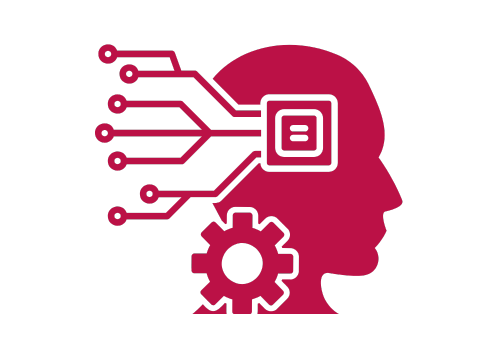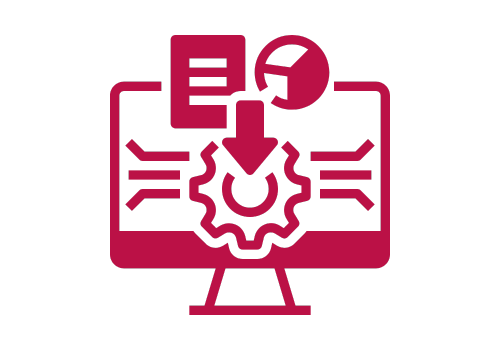Deep Learning with PyTorch
Unlocking the Power of Neural Networks
Why This Training?
The transformative power of deep learning is being harnessed across numerous industries, from healthcare to finance to entertainment. With PyTorch, this power becomes accessible, flexible, and scalable. This hands-on training will guide you through the intricacies of deep learning, ensuring you're equipped with the skills to develop and deploy powerful neural network models using PyTorch.
Duration: 9 Hours (online / virtual live session)

Who Should Attend?
Data scientists and machine learning practitioners looking to dive deeper into neural networks..
Software developers and engineers keen on expanding their AI toolkit.
Anyone with a curiosity about deep learning and its applications.
Software developers and engineers keen on expanding their AI toolkit.
Anyone with a curiosity about deep learning and its applications.

Pre-requisites
A foundational understanding of Python programming.
Basic knowledge of machine learning concepts.
Familiarity with linear algebra and calculus is beneficial but not mandatory.
Basic knowledge of machine learning concepts.
Familiarity with linear algebra and calculus is beneficial but not mandatory.

Course Highlights
Foundations of Deep Learning: Discover the magic behind neural networks and their real-world implications.
PyTorch Proficiency: Master the art of building, training, and deploying neural network models using PyTorch.
PyTorch Proficiency: Master the art of building, training, and deploying neural network models using PyTorch.
See more
Hands-on Labs: Dive into practical exercises with popular datasets, gaining firsthand experience in tackling real-world challenges.
Advanced Neural Network Architectures: Learn about CNNs, RNNs, LSTMs, and GANs, understanding their use-cases and implementations.
From Development to Deployment: Understand the pipeline of taking a PyTorch model and deploying it for real-world applications.
Advanced Neural Network Architectures: Learn about CNNs, RNNs, LSTMs, and GANs, understanding their use-cases and implementations.
From Development to Deployment: Understand the pipeline of taking a PyTorch model and deploying it for real-world applications.
Materials Required by Participants
A computer with a stable internet connection.
Installation of Python (preferably 3.7 or newer) and PyTorch.
An integrated development environment (IDE) like Jupyter Notebook or PyCharm.
Access to platforms like Google Colab can be beneficial for GPU-accelerated training.
Datasets and code templates will be provided during the training.
Write your awesome label here.
Training Content
Deep Learning with PyTorch
1. Introduction to Deep Learning and PyTorch
Objective: Define and contextualize data.
1.1. Deep Learning Overview
- Why PyTorch?
- Differences between machine learning and deep learning
- Real-world applications of deep learning
1.2. PyTorch Introduction
- Why PyTorch?
- Tensors: PyTorch's fundamental building block
- Basic tensor operations
1.3.Neural Networks Basics
- Perceptrons, activation functions, and layers
- Feedforward neural networks
1.4.Building a Simple Neural Network with PyTorch
- PyTorch's nn.Module
- Constructing a basic network
- Forward propagation
2. Training Neural Networks and Practical Deep Learning
Objective: Enable participants to train deep learning models using PyTorch and understand techniques for improving model performance.
2.1. Loss Functions and Optimizers
- Common loss functions in deep learning
- Introduction to PyTorch's optimization algorithms
2.2. Backpropagation and Training
- Concept of backpropagation
- Training loop: forward and backward pass
- PyTorch's autograd system for automatic differentiation
2.3. Regularization and Dropout
- Preventing overfitting in deep networks
- Implementing dropout in PyTorch
2.4. Convolutional Neural Networks (CNNs)
- Importance of CNNs in image data
- Building a basic CNN using PyTorch
2.5. Hands-on Lab: Image Classification
- Using a popular dataset (e.g., CIFAR-10 or Fashion MNIST)
- Training a CNN to classify images
3. Advanced Topics and Real-World Applications
Objective: Dive deeper into advanced PyTorch modules and showcase the application of deep learning in real-world scenarios.
3.1. Recurrent Neural Networks (RNNs) and Long Short-Term Memory (LSTM)
- Working with sequential data
- Basics of RNNs and LSTMs
- Implementation in PyTorch
3.2. Transfer Learning
- What is transfer learning?
- Using pre-trained models in PyTorch
3.3. Generative Adversarial Networks (GANs)
- Understanding GANs
- Basic GAN implementation in PyTorch
3.4. Deployment and Production
- TorchScript and model serialization
- Serving PyTorch models in production environments
3.4. Hands-on Lab: Real-world Project
- Implementing a deep learning solution for a realistic problem
- Tips, tricks, and best practices
WOMEN AI ACADEMY
Women AI Academy is a gender-equality and technology driven learning & development organization
Site Terms & Info
ETHOS AI Training & Consulting GmbH
Weihenstephanerstr.1281673
Munich-Germany
We are driven by the vision of making AI both ethical and accessible to everyone
Copyright © 2024 Brought to you by Ethos ai AI Training & Consultancy GmbH
Ali Hessami is currently the Director of R&D and Innovation at Vega Systems, London, UK. He has an extensive track record in systems assurance and safety, security, sustainability, knowledge assessment/management methodologies. He has a background in the design and development of advanced control systems for business and safety-critical industrial applications.
Hessami represents the UK on the European Committee for Electrotechnical Standardization (CENELEC) & International Electrotechnical Commission (IEC) – safety systems, hardware & software standards committees. He was appointed by CENELEC as convener of several Working Groups for review of EN50128 Safety-Critical Software Standard and update and restructuring of the software, hardware, and system safety standards in CENELEC.
Ali is also a member of Cyber Security Standardisation SGA16, SG24, and WG26 Groups and started and chairs the IEEE Special Interest Group in Humanitarian Technologies and the Systems Council Chapters in the UK and Ireland Section. In 2017 Ali joined the IEEE Standards Association (SA), initially as a committee member for the new landmark IEEE 7000 standard focused on “Addressing Ethical Concerns in System Design.” He was subsequently appointed as the Technical Editor and later the Chair of P7000 working group. In November 2018, he was appointed as the VC and Process Architect of the IEEE’s global Ethics Certification Programme for Autonomous & Intelligent Systems (ECPAIS).
Trish advises and trains organisations internationally on Responsible AI (AI/data ethics, policy, governance), and Corporate Digital Responsibility.
Patricia has 20 years’ experience as a lawyer in data, technology and regulatory/government affairs and is a registered Solicitor in England and Wales, and the Republic of Ireland. She has authored and edited several works on law and regulation, policy, ethics, and AI.
She is an expert advisor on the Ethics Committee to the UK’s Digital Catapult Machine Intelligence Garage working with AI startups, is a Maestro (a title only given to 3 people in the world) and expert advisor “Maestro” on the IEEE’s CertifAIEd (previously known as ECPAIS) ethical certification panel, sits on IEEE’s P7003 (algorithmic bias)/P2247.4 (adaptive instructional systems)/P7010.1 (AI and ESG/UN SDGS) standards programmes, is a ForHumanity Fellow working on Independent Audit of AI Systems, is Chair of the Society for Computers and Law, and is a non-exec director on the Board of iTechlaw and on the Board of Women Leading in AI. Until 2021, Patricia was on the RSA’s online harms advisory panel, whose work contributed to the UK’s Online Safety Bill.
Trish is also a linguist and speaks fluently English, French, and German.
In 2021, Patricia was listed on the 100 Brilliant Women in AI Ethics™ and named on Computer Weekly’s longlist as one of the Most Influential Women in UK Technology in 2021.

